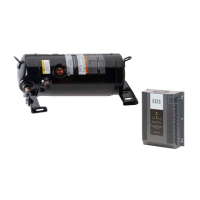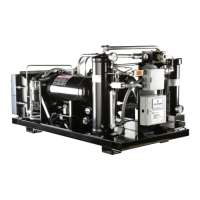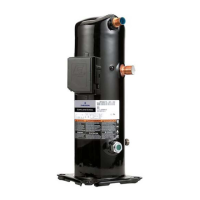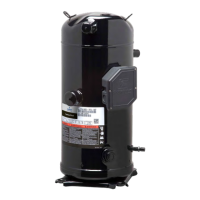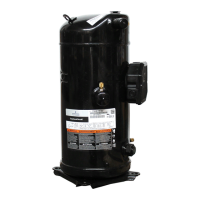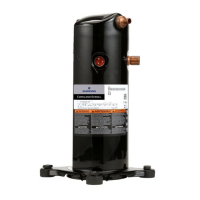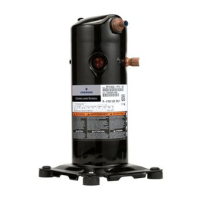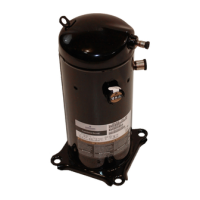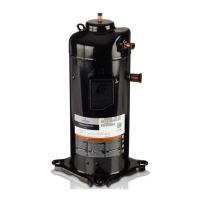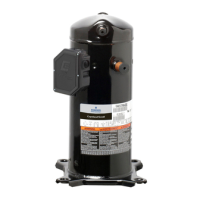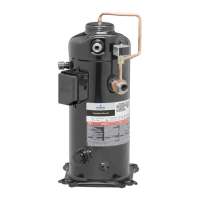16 AGL_HP_VS_YHV2P_E_Rev0
capacity of the compressor in order to ensure proper operation of the reversing valve under all
operating conditions.
The reversing solenoid valve should be wired so that the valve does not reverse when the system is
shut off by the system controller in the heating or cooling mode. If the valve is allowed to reverse at
system shut off, suction and discharge pressures are reversed to the compressor. This results in a
condition of system pressures equalizing through the compressor which can cause the compressor
to slowly rotate until the pressures equalizes. This condition does not affect compressor durability
but can cause unexpected sound after the compressor is turned off.
The preferred method of mitigating defrost sound for the variable speed scroll is to signal the drive
to go to low speed when a defrost signal is received from the system. When low speed is reached,
the reversing valve is signalled to change positions. The system should be allowed to operate for 30
to 60 seconds at low speed for the suction and discharge pressures to stabilize. After 30 to 60
seconds the compressor speed should be increased to some predetermined speed based on the
outdoor ambient temperature. The routine at the end of the defrost cycle should be similar. The above
method is a suggestion and the system design engineer should develop the routine that best
mitigates compressor sound during defrost while ensuring a defrost cycle that is as short as possible.
3.9 Sound and vibration
When connecting a Scroll compressor to a system, care must be taken to ensure that the piping is
properly designed.
A scroll compressor makes both a rocking and twisting motion
and enough flexibility must be provided in the pipe-lines to
allow starting, stopping and steady state running of the
compressor without transmitting excessive stress into any
line attached to the unit. In a split system, the most important
goal is to ensure minimal vibration in all directions to avoid
transmitting vibrations to the structure to which the lines are
fastened.
Under some conditions, the Copeland Scroll has a normal
starting rotational motion that can transmit a transient noise
along the lines. This may be particularly pronounced in
compressors using a three-phase motor due to their
inherently higher starting torque. This phenomenon, like the
one described previously, can easily be avoided by using
standard line isolation techniques.
Since the variable speed scroll has a broad running frequency range (15-120 Hz), it is almost
impossible to avoid all of the natural frequencies that may exist in the system piping. The system
designer must carefully evaluate these resonant frequency conditions and either a) avoid them by
not allowing the compressor speed to align with the resonant frequency, or b) evaluate the risk and
life of the piping system when the compressor is allowed to run at frequencies that are coincident
with the natural frequencies of the piping system. If option "b" is chosen, strain gauging of the system
piping is required.
The sound level of a system is the result of design, quality and application. Scroll compressors sound
power levels generally increase with the compressor model capacity and the condition pressure ratio.
For variable speed scroll compressors, they also and mainly increase with the compressor speed.
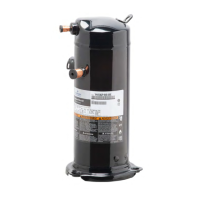
